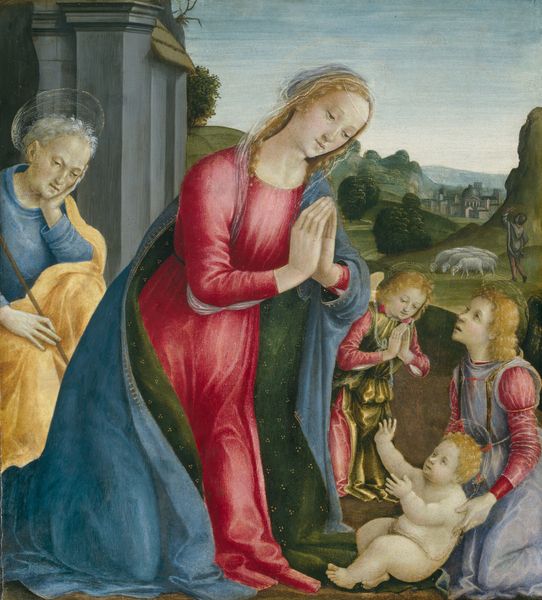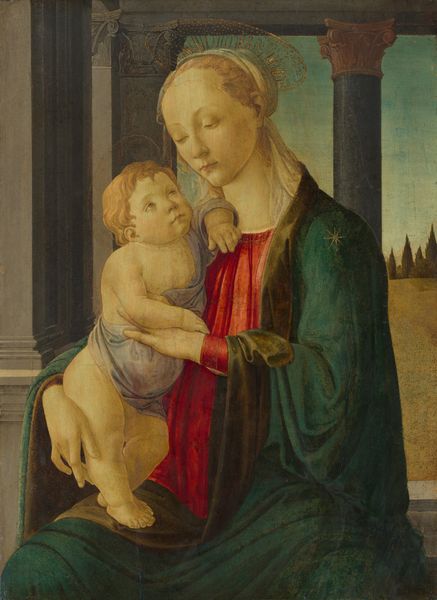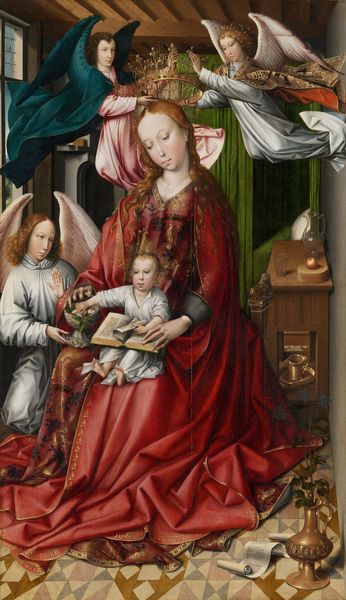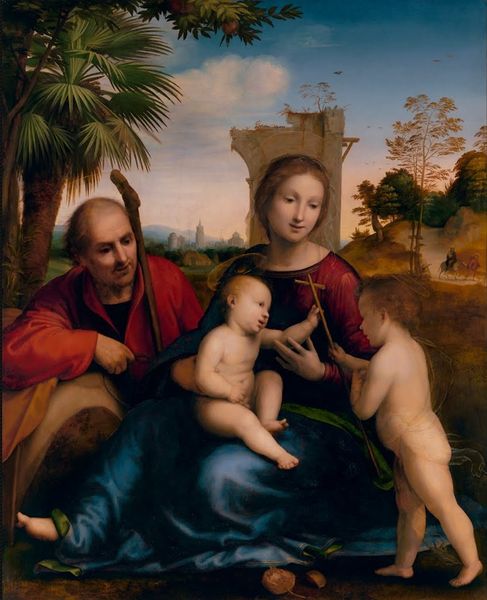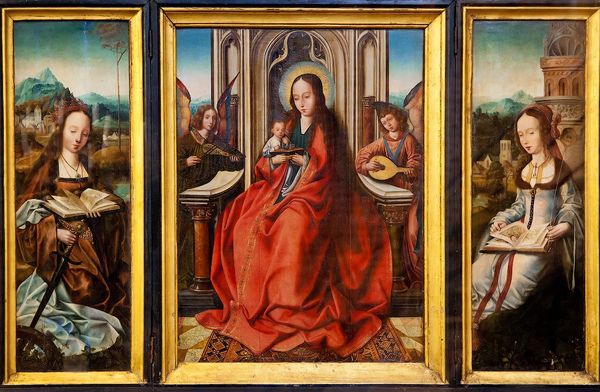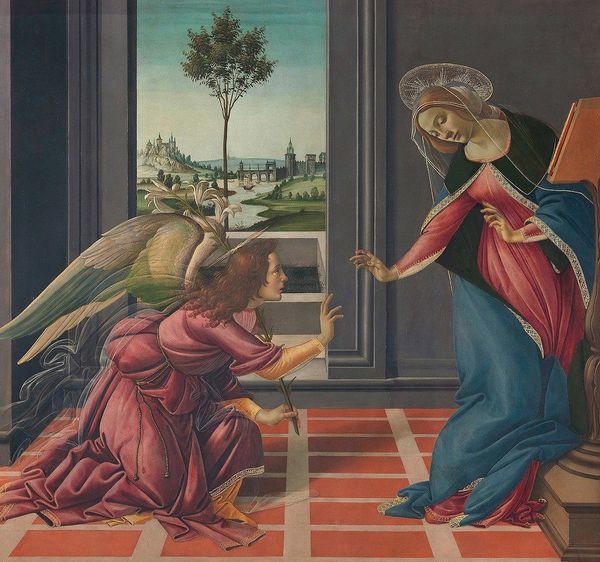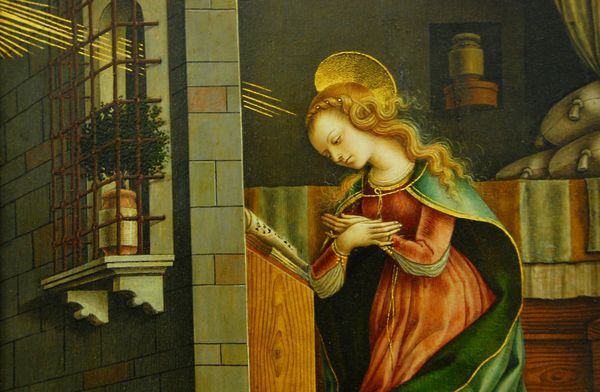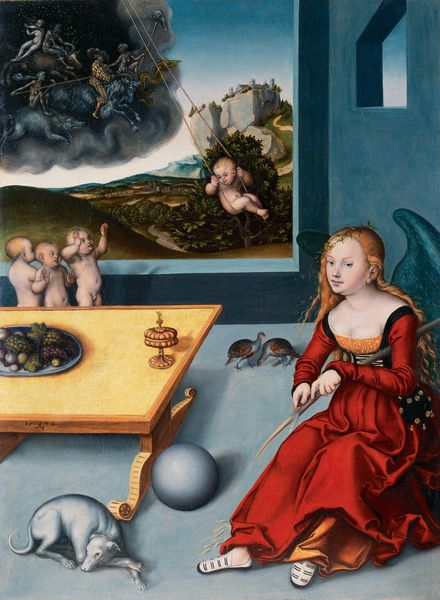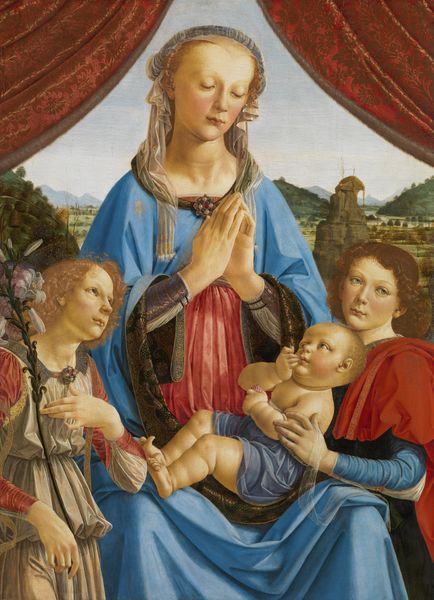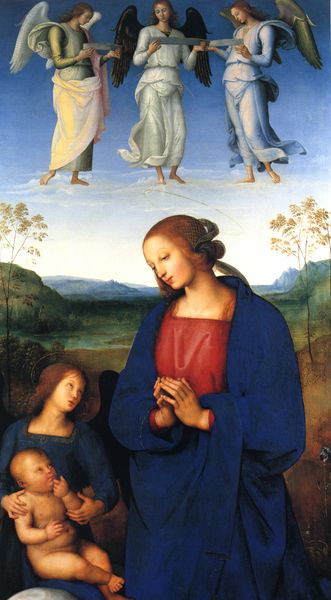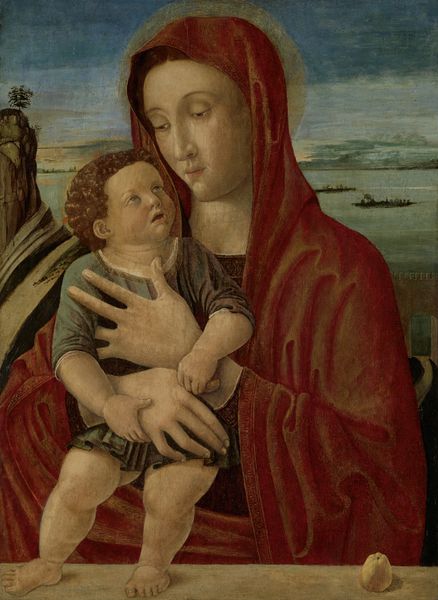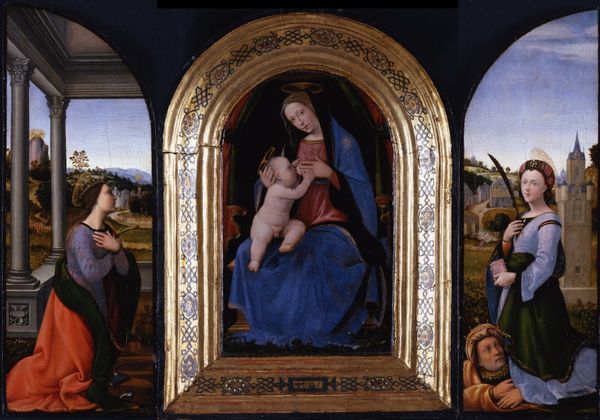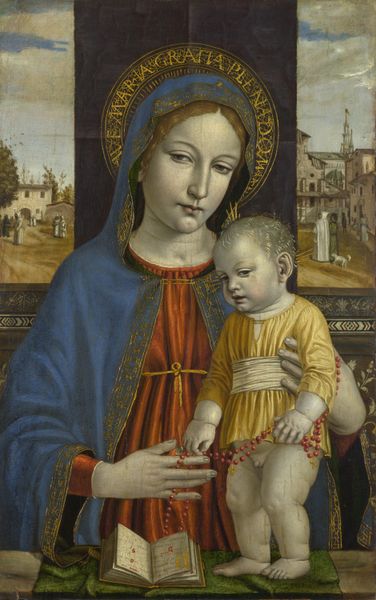
painting, oil-paint
#
portrait
#
painting
#
oil-paint
#
landscape
#
oil painting
#
genre-painting
#
history-painting
#
academic-art
#
italian-renaissance
#
portrait art
#
miniature
#
realism
Dimensions: overall: 78 x 51 cm (30 11/16 x 20 1/16 in.) framed: 119.7 x 86.4 x 10 cm (47 1/8 x 34 x 3 15/16 in.)
Copyright: National Gallery of Art: CC0 1.0
Editor: This is "The Virgin Reading" by Vittore Carpaccio, painted around 1505 using oil paint. It's striking how the figure is so still, almost statuesque, yet the details, especially in her clothing, seem so tactile. What do you make of it? Curator: Its composition reveals a fascinating tension between surface and depth. Notice the linear perspective, how it draws the eye into the landscape, yet the figure of the Virgin occupies a plane that is almost entirely frontal. It creates a distinct separation. How does that impact your understanding? Editor: I guess it flattens the space, pushing her forward almost as an object for observation, not a person within a scene. What about the colors? The red and gold are so rich. Curator: Indeed. The use of color serves to highlight her form and texture. Observe how Carpaccio meticulously renders the folds and shadows of her garments, creating a contrast between the luminous sleeves and the denser, more muted dress. This meticulous rendering of fabric, common to this period, elevates texture almost as subject, guiding your eyes across surface before the narrative takes hold. How does it make you feel? Editor: It's like she’s physically present despite being set against that background. It feels controlled, not chaotic at all. Do you think the artist aimed for perfect harmony in shape and form here? Curator: “Harmony” is an interesting term. Consider the slight asymmetry in her pose, or the somewhat awkward placement of her hands. These "imperfections," within a carefully structured composition, introduce a vital element of human vulnerability and a sense of quiet introspection. Perhaps "harmony" isn't the objective but something deeper – the construction of visual reality. Editor: So, it is less about pure beauty and more about how the artist chose to represent her? Thanks! That helps me look at it in a whole new way. Curator: Precisely. It underscores how, through precise manipulations of form, colour, and composition, the artwork invites endless speculation.
Comments
No comments
Be the first to comment and join the conversation on the ultimate creative platform.
